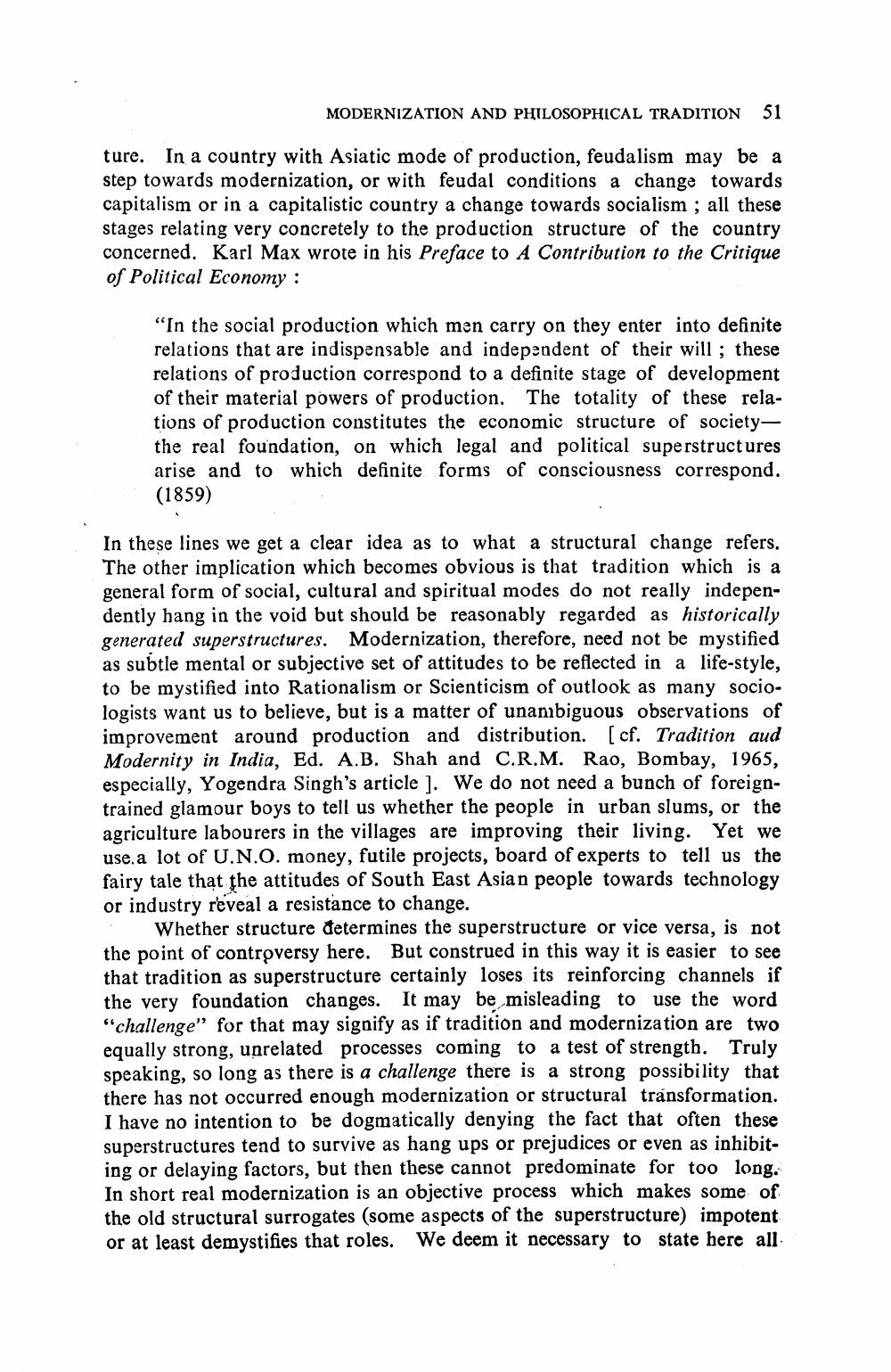Book Title: Modernization And Philosophical Tradition India And Third World Author(s): Sachindranath Ganguly Publisher: Sachindranath Ganguly View full book textPage 5
________________ MODERNIZATION AND PHILOSOPHICAL TRADITION 51 ture. In a country with Asiatic mode of production, feudalism may be a step towards modernization, or with feudal conditions a change towards capitalism or in a capitalistic country a change towards socialism ; all these stages relating very concretely to the production structure of the country concerned. Karl Max wrote in his Preface to A Contribution to the Critique of Political Economy : "In the social production which men carry on they enter into definite relations that are indispensable and independent of their will; these relations of production correspond to a definite stage of development of their material powers of production. The totality of these relations of production constitutes the economic structure of societythe real foundation, on which legal and political superstructures arise and to which definite forms of consciousness correspond. (1859) In these lines we get a clear idea as to what a structural change refers. The other implication which becomes obvious is that tradition which is a general form of social, cultural and spiritual modes do not really independently hang in the void but should be reasonably regarded as historically generated superstructures. Modernization, therefore, need not be mystified as subtle mental or subjective set of attitudes to be reflected in a life-style, to be mystified into Rationalism or Scienticism of outlook as many sociologists want us to believe, but is a matter of unanbiguous observations of improvement around production and distribution. [cf. Tradition aud Modernity in India, Ed. A.B. Shah and C.R.M. Rao, Bombay, 1965, especially, Yogendra Singh's article ). We do not need a bunch of foreigntrained glamour boys to tell us whether the people in urban slums, or the agriculture labourers in the villages are improving their living. Yet we use a lot of U.N.O. money, futile projects, board of experts to tell us the fairy tale that the attitudes of South East Asian people towards technology or industry reveal a resistance to change. Whether structure determines the superstructure or vice versa, is not the point of controversy here. But construed in this way it is easier to see that tradition as superstructure certainly loses its reinforcing channels if the very foundation changes. It may be misleading to use the word "challenge" for that may signify as if tradition and modernization are two equally strong, unrelated processes coming to a test of strength. Truly speaking, so long as there is a challenge there is a strong possibility that there has not occurred enough modernization or structural transformation. I have no intention to be dogmatically denying the fact that often these superstructures tend to survive as hang ups or prejudices or even as inhibiting or delaying factors, but then these cannot predominate for too long. In short real modernization is an objective process which makes some of the old structural surrogates (some aspects of the superstructure) impotent or at least demystifies that roles. We deem it necessary to state here allPage Navigation
1 ... 3 4 5 6 7 8 9 10 11 12 13 14
